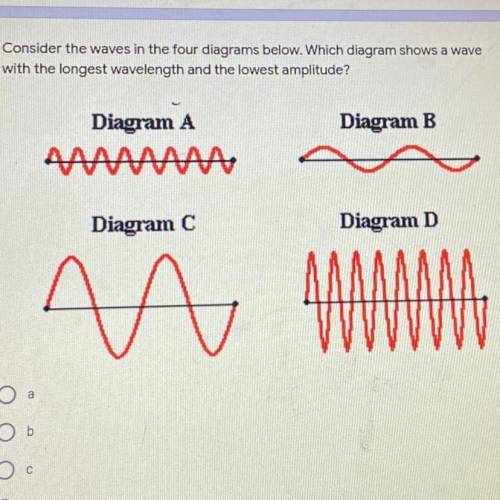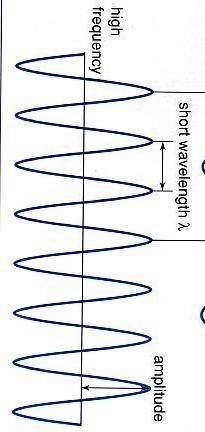
Physics, 25.05.2021 19:10 raulhill98
Consider the waves in the four diagrams below. Which diagram shows a wave with the longest wavelength and the lowest amplitude?


Answers: 1


Another question on Physics

Physics, 21.06.2019 22:00
To run the physics cart, the fan speed of the cart is manipulated. this is the (blank) variable. the cart accelerates due to the speed of the fan. acceleration is therefore the (blank) variable. a “constant” is a parameter that stays the same regardless of the variables. one parameter of the cart that is held constant is the (blank) .
Answers: 1

Physics, 22.06.2019 03:30
As part of an industrial process, air as an ideal gas at 10 bar, 400k expands at steady state through a valve to a pressure of 4 bar. the mass flow rate of air is 0.5 kg/s. the air then passes through a heat exchanger where it is cooled to a temperature of 295k with negligible change in pressure. the valve can be modeled as a throttling process, and kinetic and potential energy effects can be neglected. (a) for a control volume enclosing the valve and heat exchanger and enough of the local surroundings that the heat transfer occurs at the ambient temperature of 295 k, determine the rate of entropy production, in kw/k. (b) if the expansion valve were replaced by an adiabatic turbine operating isentropically, what would be the entropy production? compare the results of parts (a) and (b) and discuss.
Answers: 3

Physics, 22.06.2019 07:30
Some material consisting of a collection of microscopic objects is kept at a high temperature. a photon detector capable of detecting photon energies from infrared through ultraviolet observes photons emitted with energies of 0.3 ev, 0.5 ev, 0.8 ev, 2.0ev, 2.5ev, and 2.8ev. these are the only photon energies observed. (a) draw and label a possible energy-level diagram for one of the microscopic objects, which has four bound states. on the diagram, indicate the transitions corresponding to the emitted photons. explain briefly. (b) would a spring–mass model be a good model for these microscopic objects? why or why not? (c) the material is now cooled down to a very low temperature, and the photon detector stops detecting photon emissions. next, a beam of light with a continuous range of energies from infrared through ultraviolet shines on the material, and the photon detector observes the beam of light after it passes through the material. what photon energies in this beam of light are observed to be significantly reduced in intensity (“dark absorption lines”)? explain briefly.
Answers: 3

Physics, 22.06.2019 18:00
Astudent weighing 700 n climbs at constant speed to the top of an 8 m vertical rope in 10 s. the average power expended by the student to overcome gravity is most nearly
Answers: 2
You know the right answer?
Consider the waves in the four diagrams below. Which diagram shows a wave
with the longest waveleng...
Questions


Biology, 28.01.2020 23:44


Computers and Technology, 28.01.2020 23:44



French, 28.01.2020 23:44



Mathematics, 28.01.2020 23:44

Social Studies, 28.01.2020 23:44

Arts, 28.01.2020 23:44

Mathematics, 28.01.2020 23:44


History, 28.01.2020 23:44

Mathematics, 28.01.2020 23:44

Mathematics, 28.01.2020 23:44

Mathematics, 28.01.2020 23:44






